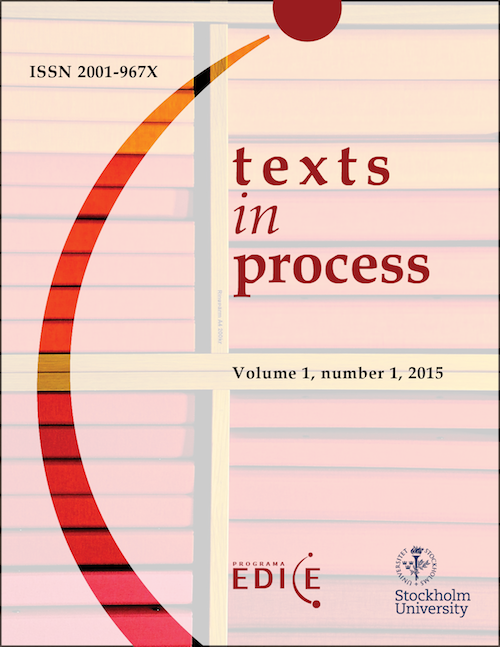A pact of mutual aggression: digital-media audience’s negotiation of face and role
Readers’ comments in the newspaper La Nación.com
Abstract
From the beginning, one of the most controversial features of the interaction on the Internet was the frequency of aggression and explicit violence in verbal exchanges. After two decades of the emergence of these spaces of virtual interaction, new discursive practices on the web have appeared and with them, new forms of violence that occur not only in forums, chats or blogs but in practice - like the newspapers- that they seemed beyond these verbal wars. In this paper we analyze one of the most widespread interactive practices in the public sphere, the comment in digital newspapers, which -even moderately- is common to find this type of behavior. In this paper, we propose to consider what kind of interpersonal / institutional relationship between the newspaper and its readers can sustain this kind of violent exchanges in the public sphere. The theoretical framework of this article is critical and multimodal discourse analysis (Fairclough 2003; Kress 2003, 2010). For the analysis of texts, the notion of image (Goffman1981) and politeness theory (Brown and Levinson 1978) and contributions to this model made Lavandera (1988), Bravo (2002) and Hernández Flores (2004) allow us to analyze the treatment of the image and the discursive strategies that remark changes in interpersonal and institutional relationship. The systemic functional linguistics (Halliday 2004) and appraisal theory (Martin and White 2005) allow us to analyze the evaluative resources in these texts. The corpus analyzed consists of a series of 70 news of one of major media of Argentina: La Nación.com.
Downloads
References
Bravo, D. (2002). Actividades de cortesía, imagen social y contextos socioculturales: una introducción. En Bravo, D. (Ed). Actas del Primer Coloquio del Programa EDICE. La perspectiva no etnocentrista de la cortesía: identidad sociocultural de las comunidades hispanohablantes. Universidad de Estocolmo.
Brown P. y Levinson S. (1978). Some universals in language usage. Cambridge: Cambridge University Press.
Carrizo, A. (en prensa). “Disparen contra el pianista: construcción social de la figura denigrada”. Actas del Coloquio Internacional “Violencia en América Latina” Discursos, Prácticas, Actores. Observatorio interdisciplinario sobre discursos de la violencia estatal en América Latina. Buenos Aires, 16-18 de septiembre de 2014.
Dandrea, F. (en prensa). Identidad virtual y propósito estratégico de la actividad de imagen de descortesía en foros de debate. En Sal Paz, J. (Ed.). Participación ciudadana y periodismo digital. Revista del Instituto de Investigaciones Lingüísticas y Literarias Hispanoamericana, 19(1).
Dery, M. (1993). Flame wars: The discourse of cyberculture. Durham, DC: Duke University Press.
Fuentes Rodríguez, C. y Alcaide Lara, E. (2008). (Des)Cortesía, agresividad y violencia verbal en la sociedad actual. Sevilla: Publicaciones de la Universidad de Sevilla.
Fairclough, N. (2003). Analysing Discourse. London: Routledge. http://dx.doi.org/10.1177/09579265030146008, http://dx.doi.org/10.1177/0957926503014001927
Garfinkel, H. (1975). Conditions of successful degradation ceremonies. En Manis, J.G. y Meltzer, B.N. (Eds.). Symbolic Interaction, a reader in social psychology (pp. 201-208). Boston: Allyn and Bacon.
Goffman, E. (1981). Forms of talk. Philadelphia, PA: University of Pennsylvania Press.
Halliday, M. (2004). An Introduction to Functional Grammar. London: Arnold.
Hernández-Flores, N. (2004). La cortesía como la búsqueda del equilibrio de la imagen social. En Bravo, D. y Briz, A. (Eds.). Pragmática Sociocultural: estudios sobe el discurso de cortesía en español. Barcelona: Ariel.
Herring, S. (1999). The rethorical dynamics of gender harassment on line. The Information Society, 15 (3), pp. 151-167. http://dx.doi.org/10.1080/019722499128466
Kress, G. (2003). Literacy in the New Media Age. London: Routledge. http://dx.doi.org/10.4324/9780203164754
Kress, G. (2010). Multimodality: A Social Semiotic Approach to Contemporary Communication. London: Routledge.
Lavandera, B. (1988). The social pragmatics of politeness forms. En Von Ulrich Ammon, H., Dittmar, N. y Mattheier, K. (Eds.) Sociolinguistics. An International Handbook of the Science of Language and Society. Berlin/New York: Walter de Gruyter.
Ma, R. (1996). Computer-Mediated Conversations as a New Dimension of Intercultural Communication between East Asian and North American College Students. En Herring, S. (Ed.). Computer-mediated communication. Linguistic, social and cross-cultural perspectives. Amsterdam/Philadelphia: John Benjamins Publishing. http://dx.doi.org/10.1075/pbns.39.14ma
Mancera Rueda, A. (en prensa). “El problema es que siempre hay un politicucho que no tiene ni p*** idea de nada y nos la lía”: (des)cortesía y actividades de imagen en las manifestaciones de la opinión de los lectores de la prensa española. En Sal Paz, J. (Ed.) Participación ciudadana y periodismo digital. Revista del Instituto de Investigaciones Lingüísticas y Literarias Hispanoamericana 19(1).
Martin, J.R. y White, P. (2005). The Language of Evaluation. Appraisal in English. New York: Palgrave Macmillan. http://dx.doi.org/10.1177/1356389005059385
Nitin et al. (2012). Classification of Flames in Computer-Mediated Communications. Recuperado de: http://arxiv.org/ftp/arxiv/papers/1202/1202.0617.pdf (23-07-2014).
Noblía, M. V. (1998). The computer-mediated communication, a new way of understanding language. IRISS 98. Bristol University. Recuperado de: http://www.sosig.ac.uk/iriss/ (23-07-2014).
Noblía, M. V. (2000a). Conversación y comunidad: las chats en la comunidad virtual. Revista Iberoamericana de Discurso y Sociedad, 5 vol. 2. Buenos Aires: Gedisa.
Noblía, M. V. (2000b). Internet, comunidad virtual y control. En Noblía, M. V. y Pardo, M. L. (Eds.). Globalización e Internet: impactos multidisciplinarios. Buenos Aires: Biblos.
Noblía, M. V. (2001). Más allá de la Netiquette: la negociación del español y la cortesía en las chats. Oralia. Análisis del discurso oral 4, pp. 149-178.
Noblía, M. V. (2004). La ironía en las chats. Una forma de preservar las imágenes y administrar los conflictos en las conversaciones mediadas por computadoras. En Bravo, D. y Briz, A. (Eds.) Pragmática Sociocultural: estudios sobe el discurso de cortesía en español. Barcelona: Ariel.
Noblía, M. V. (2006). Las palabras y el sexo. La construcción discursiva de la sexualidad en el chat. En Todolí, J., Labarta, M. y Dolón, E. (Eds.). Critical Discourse Analysis. L’Anàlisi Crítica del Discurs. Quaderns Filología. Estudis Lingüístics XI, pp. 175-196.
Noblía, M. V. (2008). La construcción de la identidad en las chats. Bravo, D. y Briz, A. (Eds.). Actas del III Coloquio Internacional del Programa EDICE. Cortesía y conversación: de lo escrito a lo oral. Valencia/Estocolmo: Universidad de Valencia/Programa EDICE.
Noblía, M. V. (2008). De amores y odios: la construcción multimodal de la identidad en los fotolog. En Spiegel, A. (Ed.). Vida cotidiana, TIC y Escuela. Buenos Aires: Ed. Noveduc.
Noblía, M. V. (2009). Modalidad, evaluación e identidad en el chat. Discurso y Sociedad, 3 (4), pp. 738-768.
Noblía, M. V. (2012). La relación interpersonal en el chat. Procesos de construcción y negociación de la identidad. Tesis doctoral. Buenos Aires: Universidad de Buenos Aires.
Noblía, M. V. (2014). Modes, medium and hypertext: some theoretical and methodological issues in the conceptualization of genre in digital texts. En Siân, A. y Gardner, S. (Eds.). Language in a digital age: be not afraid of digitality. Coventry: DEL Coventry University.
Pano Alamán, A. (2012). Diálogo e información conversacional en la prensa digital española. En Cassol, A. et al. (Eds). Il dialogo. Lingue, letterature, linguaggi, culture (pp. 351-358). Roma: AISPI Edizioni.
Pardo, M. L. y Noblía, M. V. (en prensa). El discurso sobre la criminalidad en YouTube. Juventud y estigma. Representações discursivas do outro. San Pablo: Editora Contexto.
Pérez-Latre, F. J., Portilla, I. y Sánchez Blanco, C. (2011). Social Networks, Media and Audiences: A Literature Review. Comunicación y Sociedad, 1, pp. 63-74.
Qian, H. y Scott, C. (2007). Anonymity and Self-Disclosure on Weblogs. Journal of Computer-Mediated Communication, 12, pp. 1428-1451. http://dx.doi.org/10.1111/j.1083-6101.2007.00380.x
Raiter, A. (2001). Representaciones Sociales. Buenos Aires: Eudeba.
Rheingold, H. (1993). The virtual community. Homesteading on the Electronic Frontier. London: Addison-Wesley Publishing Company.
Selfe, C. y Meyer, P. R. (1991). Testing claims for on-line conferences. Written Communication, 8 (2), pp. 163-192. http://dx.doi.org/10.1177/0741088391008002002
Tsikerdekis, M. (2012). The choice of complete anonymity versus pseudonymity for aggression online. eMinds: International Journal on Human-Computer Interaction, 2 (8), pp. 35-57.
Turner, D. (s.f.). Comments Gone Wild: Trolls, Flames, and the Crisis at Online Newspapers, University of California. Recuperado de:
http://static1.squarespace.com/static/5133ffdde4b0c6fb04ddab8f/t/5217da16e4b000bbb34b75d2/1377294870640/CrisisInCommenting.pdf (25/08/ 2014).
Werry, C. (1996). Linguistic and interactional features of Internet Relay Chat. En Herring, S. (Ed.). Computer-Mediated-Communication. Linguistic, Social and Cross-Cultural Perspectives. Amsterdam/Philadelphia: John Benjamins. http://dx.doi.org/10.1075/pbns.39.06wer

Copyright (c) 2015 María Valentina Noblía

This work is licensed under a Creative Commons Attribution 4.0 International License.
Texts in Process (TEP) is a non-commercial open-access scholarly journal governed by a Creative Commons Recognition 4.0 International license. It follows a full and unrestricted open access, without charges or fees for shipping, reviewing, processing and publishing articles. Users can read, download without registering, distribute, print or link the complete texts of numbers and articles, without the permission of the editors or authors. There is also no charge to publish (APCs), being applicable to the entire editorial process. The authors retain their intellectual rights at all times.
ASICE-EDICE Programme has always believed that non-commercial, open, unlimited and unrestricted access to specialized academic publications is a vehicle for academic freedom and scientific rigor. It adheres and shares the Declaration of Mexico and DORA to guarantee the protection of academic and scientific production in Open Access.
















